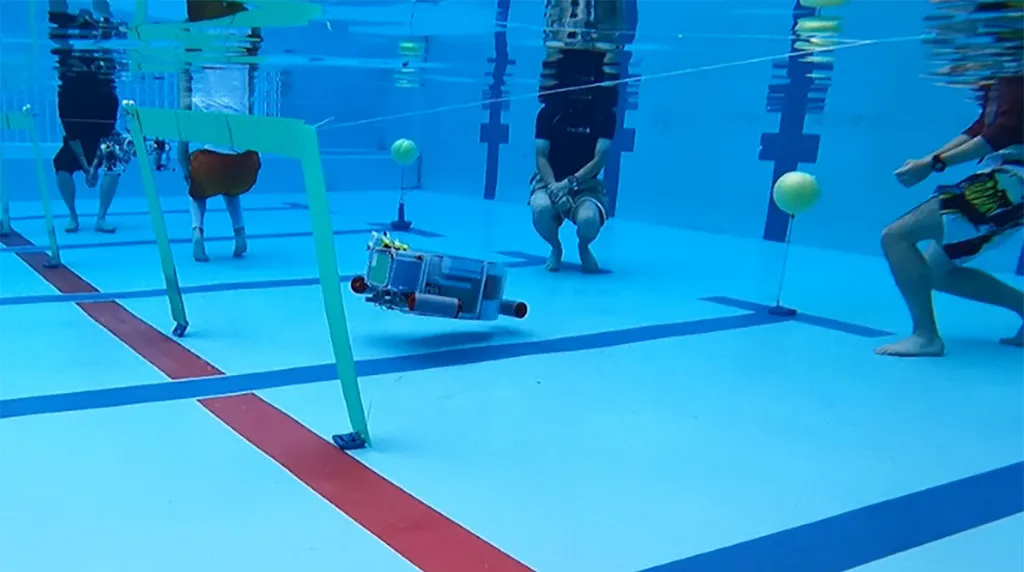Researchers from the University of Tokyo have developed a groundbreaking system that could revolutionize underwater robotics. Kohei Nishi, Masato Kobayashi, and Yuki Uranishi have introduced MR-UBi, a mixed reality-based underwater robot arm teleoperation system with a reaction torque indicator. This innovation integrates visual and haptic feedback to enhance the precision and usability of underwater robotic operations.
The system, known as MR-UBi, incorporates a reaction torque indicator (RTI) that overlays a color and length-coded torque bar in the mixed reality head-mounted display (MR-HMD). This feature enables operators to receive seamless visual and haptic feedback during the teleoperation of underwater robot arms. The RTI provides real-time information about the force being applied, allowing for more accurate and controlled movements.
To validate the effectiveness of MR-UBi, the researchers conducted user studies with sixteen participants. The study compared MR-UBi against a baseline bilateral-control system. The results were compelling. MR-UBi significantly improved grasping-torque control accuracy, increasing the time within the optimal torque range. It also reduced both low and high grasping torque ranges during lift and pick-and-place tasks with objects of different stiffness.
Subjective evaluations further highlighted the advantages of MR-UBi. Participants reported higher usability scores (SUS) and lower workload (NASA-TLX) when using the MR-UBi system. These findings confirm that MR-UBi enables more stable, accurate, and user-friendly underwater robot-arm teleoperation. The integration of visual and haptic feedback proves to be a game-changer in the field of underwater robotics.
The practical applications of this technology are vast. In the marine sector, MR-UBi could enhance the precision of underwater maintenance, inspection, and repair tasks. For example, offshore wind farms, subsea pipelines, and underwater structures could benefit from more accurate and efficient robotic operations. The system’s ability to provide real-time feedback could also improve safety and reduce the risk of damage to sensitive underwater environments.
Moreover, MR-UBi could be instrumental in deep-sea exploration and scientific research. The system’s enhanced control and usability could facilitate more complex and delicate tasks, such as sample collection and data gathering in deep-sea environments. This could lead to new discoveries and a better understanding of the underwater world.
The development of MR-UBi represents a significant step forward in the field of underwater robotics. By integrating mixed reality and haptic feedback, the system offers a more intuitive and effective way to control underwater robot arms. The research conducted by Kohei Nishi, Masato Kobayashi, and Yuki Uranishi opens up new possibilities for the marine sector, paving the way for more advanced and efficient underwater operations. Read the original research paper here.

